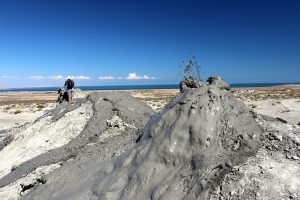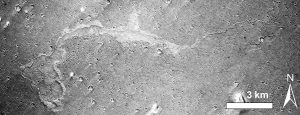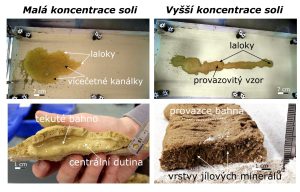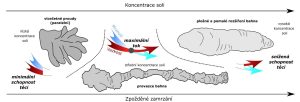Ondřej Krýza’s research was highlighted in Eos, the esteemed popularization magazine published by the American Geophysical Union (AGU), which focuses on making advancements in Earth and space sciences accessible to a broader audience.
In the northern lowlands of Mars, there are thousands of small cones that scientists believe were formed tens to hundreds of millions of years ago by mud flowing from underground. Mud on the surface of Mars behaves very differently to what we see on Earth due to the extremely low atmospheric pressure, which makes liquid water unstable. Until now, it has been unclear how the presence of various salts and their amounts change the properties of mud in the Martian environment.
🔗 Celý článek si můžete přečíst zde: https://eos.org/articles/salt-may-be-key-to-martian-mudflows
Publication in Eos represents a significant achievement and confirmation of the quality of our scientific work on an international scale. Eos is one of the leading sources of popular science articles in the field of geosciences and contributes to spreading the results of scientific research to a wider audience.
Link to the original article:
Ondřej Krýza, Petr Brož, Mark Fox-Powell, Věra Pěnkavová et al.:
Small amounts of dissolved salt increases the mobility of mud flows on Mars and other extra-terrestrial bodies
https://www.nature.com/articles/s43247-025-02110-w#Abs1
Associated movie:
Related images:

Figure 1: One of the smaller cones of Dashgil mud volcano in Azerbaijan. (PHOTO: Petr Brož)

Figure 2: Possible mud flow on Martian surface. Captured from Brož et al. (2019).

Figure 3: A view of the low-pressure chamber at the Open University (UK) where the mud experiments were conducted. The chamber makes it possible to reduce the atmospheric pressure to values prevailing on the surface of Mars in a few minutes. PHOTO: Petr Brož

Figure 4: An example of the shape of mud flows with differing salt concentrations (specifically, MgSO4 at concentrations of 0.5% and 10%). With higher salt content, the reach of the flow increases, but the flow pattern and colour also change.

Figure 5: Explanation of the changing behaviour of mud with increasing salt content. If the concentration is low, the mud freezes more easily. If the salt content is higher, the viscosity of the mud and its freezing point decrease. However, if the mud is “saturated” with salt, its viscosity increases. Therefore, the mud flows less easily, but freezes significantly later.

Ondřej Krýza (PHOTO: Miroslava Macháčková)

